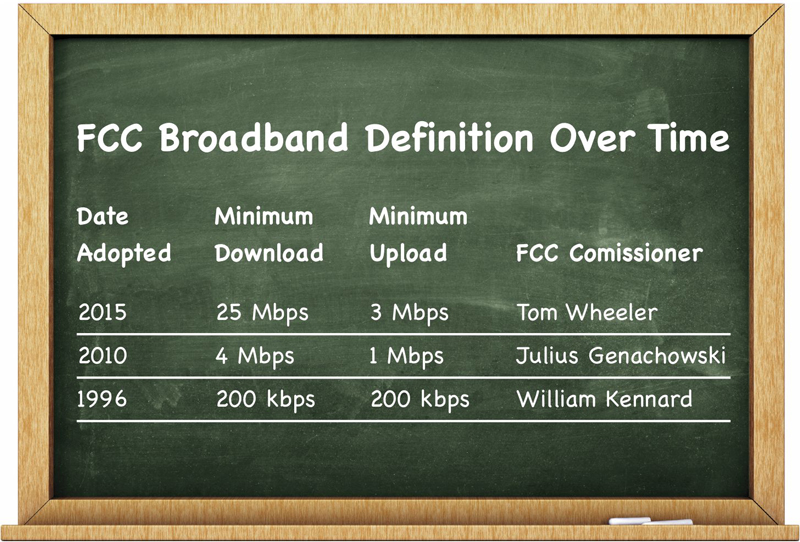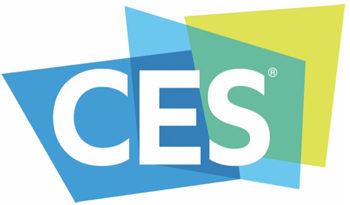Back to School, Time For Some Nerdy!
By Leslie Ellis
Polynomial time. “Tera” joining “giga” and “mega” in connectivity talk. A proposed redefinition of official broadband speed designations. That’s what tops the list of appreciably nerdy fare happening this summer, where the desktop is stacked with technical papers ultimately headed to this year’s SCTE Cable-Tec Expo. Lots to share! Let’s get nerdy!
Starting with quantum computing, which is where “polynomial time” hangs out. Quantum is a grab bag of nerdy! Here’s the big overview: People are talking quantum because it’s a new way of computing, and it’s for-sure coming. When it arrives in a practical way (meaning its computers don’t need to be chilled to outer space temperatures, measured in kelvins), quantum threatens all known digital security mechanisms. Why, because it can undo them. Quickly. Alarmingly quickly.
That’s why all of the (three) quantum papers at this year’s Expo (up from one last year) sit in the “security” track, and are tightly coupled with the term “crypto.” Comcast’s Chujiao Ma, for instance, will describe a “crypto agility risk assessment framework,” which helps you to measure how “crypto-agile” you are. Or (let’s hope not!) how quantum-doomed you are. (Important aside: Chujiao is one of 20 women-in-tech authors from Comcast at this year’s Expo — twenty!)
To be “quantum-curious,” you pretty much need to be “math tolerant.” “Polynomial time,” for instance, is math-talk; data scientists talk about “time” differently than the rest of us silly watch-wearers. For them, it’s not about seconds or months or years. It’s about what it takes to solve an algorithm, as measured by how much stuff — how many elements — are involved. Short version: Polynomial algorithms are super-fast!

“Quantum” in 1991 was a (first-ever!) 150-channel system in NYC…
commemorated with this swell paperweight.
Giga, tera, whatever it takes…
Two things happened since the last Nerdy that appended the numerical prefix “tera” onto the list for this edition. One involves raw broadband speeds: the terabit. (Tb.) The other, RF spectrum: the terahertz (THz.)
Quick refresher: kilo means thousand, mega means million, giga means billion.
What’s next is the terabit: One trillion bits, per second. (What!) It all came to light (pun intended) at the annual Optical Fiber Conference (OFC) in June, where Japanese engineers detailed a new optical system that hit 319 trillion bits per second. That’s almost double the previous record of 178 Tbps, last year; even NASA “only” uses about 400 billion bits per second.
Here’s the nerdery of it: A 552-channel comb laser blasts multiple wavelengths into a dual-polarization modulator, which then injects the signals into four optical fiber cores, outward toward two amplifiers — one doped in erbium and the other in thulium — using a technique called Raman amplification. That send/amplify process repeats until the data gets to the destination, 1,865 miles away. What’s especially notable is that the four-core middle is the same diameter as a traditional, single-core fiber, so, it’s theoretically adaptable into existing infrastructure.
The second “hello, tera” moment is something you can hear about in detail at the 2021 Cable-Tec Expo: terahertz (THz) connectivity. Check out a paper authored by Charter engineer Lakhbir Singh, titled “Terahertz Spectrum — Challenges, Potential and Applications (Solving the Data Hunger with Large Bandwidth and Spectrum Abundance.)”
Spectrally, the THz sits way, way up there in the electromagnetic spectrum, somewhere between microwave and infrared light. It’s a spectral zone already used for medical imaging, spectroscopy (an astronomy thing), and to detect concealed weapons. Putting it to use to move communications signals raises lots of questions, starting with the old one about the fate of the potted petunia on the windowsill, and anything else line-of-sight within a THz signal path.
Moving into THz spectrum is a big topic within telco 6G circles, even as the millimeter wave intentions (28 GHz, 39 GHz) of mobile 5G take a backseat to the mid-band (1 GHz to 6 GHz) spectral territories. Meaning that terahertz spectrum is higher still than where millimeter waves live. And no, that’s not a typo: 6G is coming. Put it in the same mental category as those 8K TVs that started selling in stores this summer, leapfrogging 4K.
In June, AT&T, Samsung and Qualcomm announced plans for THz studies within a new 6G Research Center at the University of Texas; also in June, and with the University of California at Santa Barbara, Samsung demo’d a 6.2 Gbps link over 15 meters at 140 GHz (which, inscrutably, is considered within the terahertz zone.) Answers to the “when” question seem to come back in the 2030 timeframe, so, probably sometime sooner than that.

Source: FCC
Broadband, redefined?
And then there’s the federal government’s proposed redefinition of “broadband,” from 25 megabits per second (Mbps) downstream and 3 Mbps up, to symmetrical 100×100 Mbps. Just from a sheer technology perspective, and especially in the upstream signal direction, it’s a triple-head-shaker. Maybe quadruple!
Here’s the background: The defined speed for “broadband” is typically set by the Federal Communications Commission (although an act of Congress could do it, I’m told.) The first broadband measuring stick came out in 1996, at 200 kbps up and down; those were mostly dial-up days, with cable modems on the near horizon.
In 2010, the FCC upped what it meant to be “broadband” to 4 Mbps down and 1 Mbps up. That happened again, in 2015, to 25 Mbps down, 3 Mbps up, which is where we still are.
Even as a longtime observer of all-things-upstream, moving its mininum speed from 3 Mbps to 100 Mbps … well, it gives new meaning to “it’s a stretch.”
Saying we’ll never need 100 Mbps upstream is as shortsighted as saying we’d never need more than 12 channels of TV, back when three channels of TV defined a hot market. Lots of things want to be the fulcum that widens the upstream signal path — which is already arguably “too skinny,” at roughly 5% of total available capacity (assuming a 750 MHz top.) The big driver, not surprisingly, is video. Anything streaming out of your webcam, including videoconferences/Zoom, is huge, compared to what used to move over the upstream: Your click to fetch a web page; your end of a phone call.
However. 100 megs worth of big stuff upstream? That’s a lotta stuff! It takes me back to the early days of 10G, when some of us were tasked with coming up with how to envision a gigabit — one billion bits — in real-life, practical ways. One such example placed an imaginary 4K TV set into all 300 rooms inside Downton Abbey, turning them all on, and streaming 4K content to them. (And you still wouldn’t get to a gig.)
What’s unclear is how we got from 25 Mbps x 3 Mbps, to 100 Mbps x 100 Mbps. No question, those are nice, round numbers! Indulge me one more Wayback Machine twist, to the early days of HDTV, when proponents were tussling over formats. Remember? Some wanted 720P, some wanted 1080i. Mark Cuban, head of what was then HDNet (and is now AXS TV), famously said his network would go with 1080i, “because it’s a bigger number.”
Many things are still unclear about the “broadband bill,” and the speed reclassification, so, help me keep an eye on it, please. For now, and in closing, I leave you with a few additional linguistic gems headed to the SCTE Expo in October: “Ungracefully disconnected,” to mean when your IoT device gets the boot and can’t reconnect. “Throughput optimized,” a cheerful phrase about capacity. And, my personal favorite, “anticipatory experiences,” which was expressed in terms of chatbots, but could apply to just about anything, from chocolate to visits from cousins to warm oceans.
Stay nerdy, friends.
 Leslie Ellis,
Leslie Ellis,
President,
Ellis Edits Inc.
leslie@ellisedits.com
Leslie Ellis is a tech writer focused on explaining complex engineering stuff for people who have less of a natural interest than engineers. She’s perhaps best known (until now!) for her long-running weekly column in Multichannel News called “Translation Please.” She’s written two broadband dictionaries, one field guide to broadband, and is a behind-the-scenes tech translator for domestic and global service providers, networks, and suppliers. She’s served as board member of the Rocky Mountain chapter of the SCTE since 2015, and is a 2019 Cable Hall of Fame inductee.
Shutterstock




